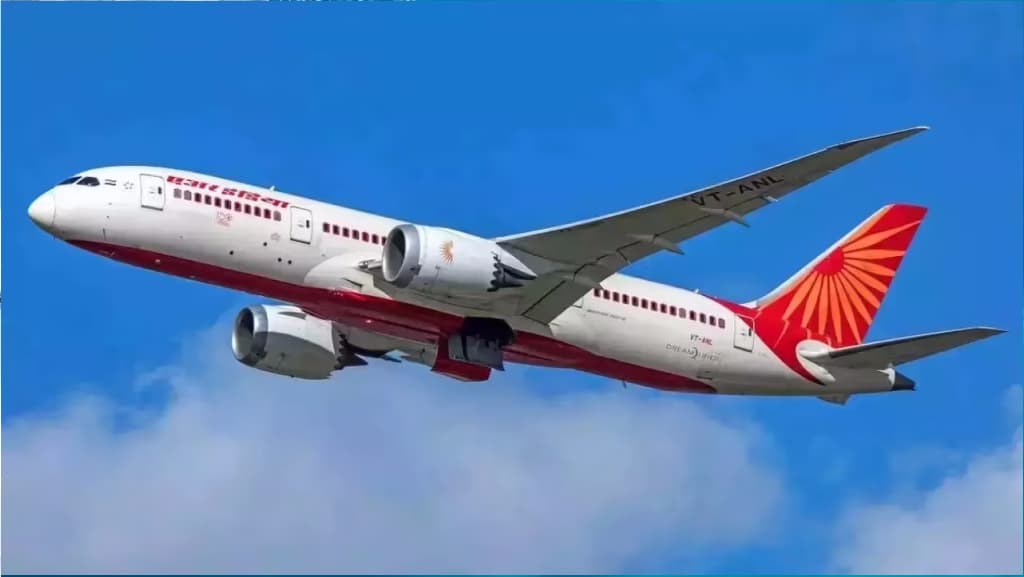
Volcanic Eruption Forces Air India Flight to Bali to Return Midair
Volcanic ash cloud from Indonesia’s Mount Agung prompts rerouting of Air India flight AI-518, triggering travel chaos and legal questions on liability.
An Air India flight AI‑2145, carrying over 250 passengers, was forced to return to Delhi on June 18 after a major eruption at Mount Lewotobi Laki‑Laki in Indonesia's East Nusa Tenggara province. The volcano sent an ash plume over 10 km high, triggering the highest eruption alert and shutting down airspace across Bali and parts of Java.
Eruption & Ash Fallout
-
Mount Lewotobi Laki‑Laki, a twin volcano standing at 1,584 m, erupted on Tuesday night, launching a massive ash column visible up to 150 km away.
-
Indonesian authorities raised the alert level to 4, expanding the danger zone surrounding the crater to 8 km.
-
Villages like Boru, Hewa, Watobuku, Nurabelen, and Nileknoheng were affected, with ashfall and evacuations disrupting local life.
Flight Diversions & Passenger Care
-
Flight AI‑2145, en route from Delhi (IGI Airport) to Bali (Denpasar), was in midair when air traffic control issued an urgent ash clearance alert near Bali.
-
The aircraft returned to Delhi and landed safely; all passengers were disembarked without incident.
-
Hotel accommodations, full refunds, and free rescheduling options were offered to affected travellers as part of Air India’s relief protocol.
Reacting to Airlines & Airspace Closures
-
Dozens of airlines—including Jetstar, Air New Zealand, Singapore's TigerAir, and Juneyao Airlines—canceled or rerouted flights to and from Bali's Ngurah Rai Airport and Labuan Bajo, citing high ash concentrations.
-
NOTAMs (Notices to Air Missions) were issued, blocking operations in Bali, Java, and adjacent air corridors.
-
Indonesia’s National Disaster Management Agency warned of ongoing threats, including possible lava flow caused by rainfall.
Legal & Safety Considerations
-
Under the Montreal Convention and the Carriage by Air Act, airlines are legally exempt from liability during natural disasters like volcanic eruptions. However, they must ensure reasonable care, including accommodation and alternative flights.
-
Airlines must adhere to ICAO/DGCA safety protocols—including a prohibition on flying through ash, timely flight alerts, crew training on ash hazards, and rigorous engine inspections.
-
Travel insurance policies often cover such events as force majeure, but passengers should verify their benefits related to cancellation, delay, or rebooking coverage.
You might be interested: Dubai Airport Launches 'Unlimited Smart Travel' Initiative for Tourists.
Expert Insight
Sunil Ambalavelil, Chairman of Kaden Boriss and a prominent corporate lawyer based in Dubai, including aviation law, commented:
“While liability is often limited under international conventions, airlines still have a duty of care towards passengers, especially in terms of communication, assistance, and post-disruption support. Compliance with international safety protocols is non-negotiable—not just for regulatory purposes but to maintain public trust in airline safety.”
Key Takeaways
-
Mount Lewotobi Laki‑Laki erupted, sending ash plumes over 10 km high.
-
Air India AI‑2145 diverted mid-flight and landed safely back in Delhi.
-
Airlines provided accommodation, refunds, and rescheduling support for passengers.
-
Numerous airlines were affected; airports in Bali and Java were temporarily shut.
-
Legal exemptions apply in such natural events, but airlines remain obligated to provide passenger care and comply with aviation safety protocols.
For any enquiries or information, contact info@thelawreporters.com or call us on +971 52 644 3004. Follow The Law Reporters on WhatsApp Channels